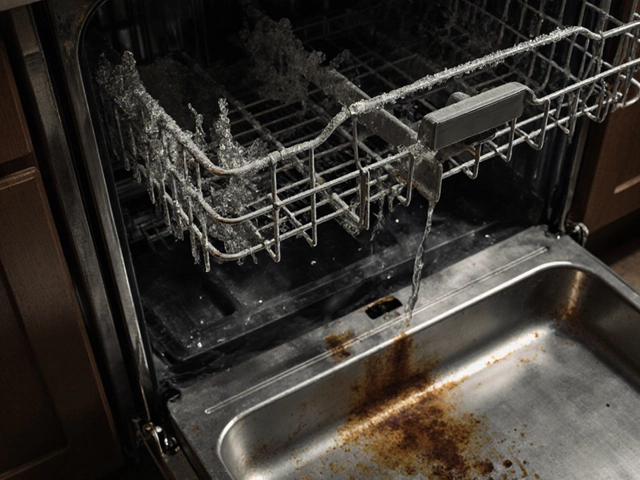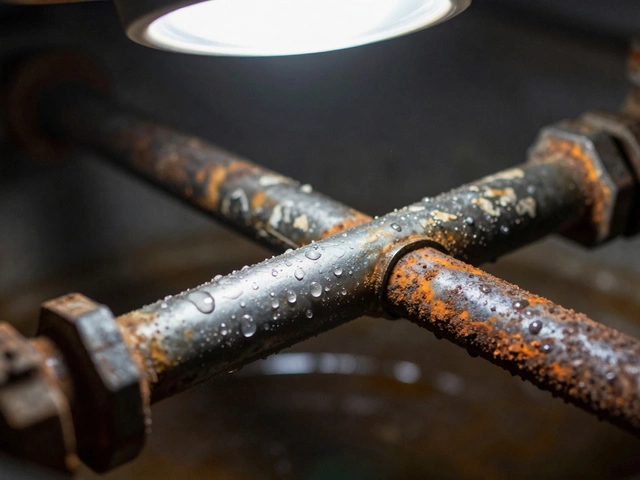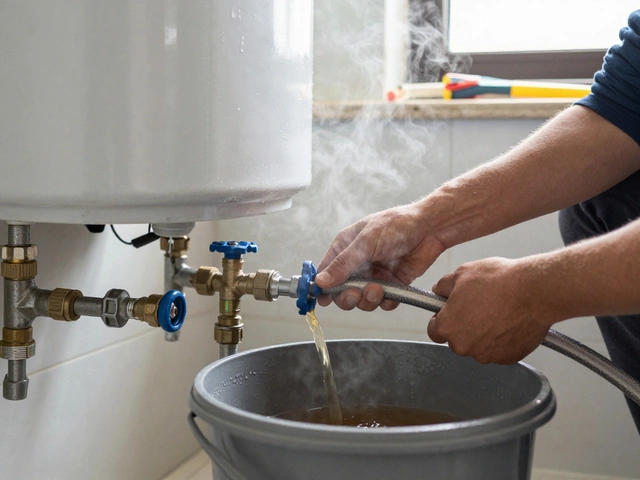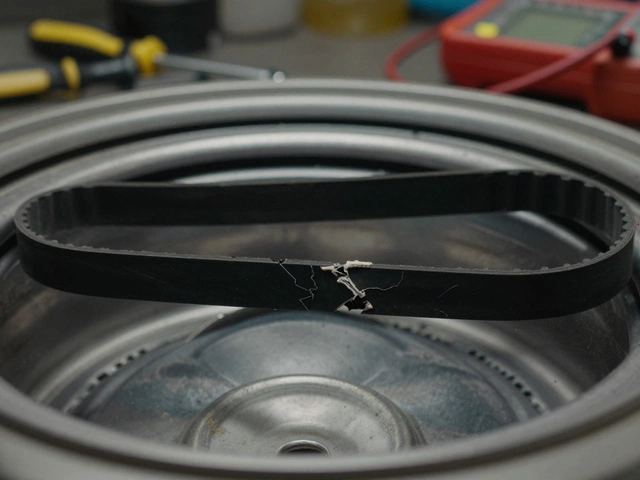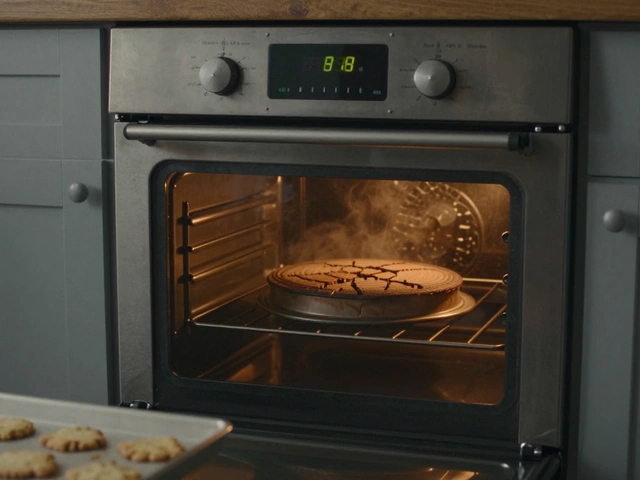You load plates into your dishwasher, press start, and expect the mechanics inside to work like magic. But what if instead of humming gently, your dishwasher stays silent or leaks water all over the floor? Believe me, nothing dials up household panic quicker—unless it’s my dog Bruno running through the mess with muddy paws. Here’s the kicker: many dishwasher problems are surprisingly easy to fix. Most folks don’t even realize how many headaches can be solved with simple tools, some patience, and a bit of troubleshooting.
Why Dishwashers Seem Complicated (But Aren’t)
When you crack open that heavy door and peer inside, dishwashers look intimidating. There are wires, hoses, a spinning arm, and electronic panels covered with cryptic codes. But honestly, most dishwasher designs haven’t changed much in decades. At their core, dishwashers are a circulation pump, a heating element, a few solenoids, and a timer or digital controller. The rinse cycles and hidden compartments might make them seem more high-tech than they really are. If you can use a screwdriver, you’re halfway to fixing the thing yourself.
Here’s something wild: According to repair shop stats, nearly 40% of all dishwasher “problems” come down to blockages or simple clogs in the filter or spray arm. These are things you can spot just by removing the lower rack and unscrewing the filter by hand. Manufacturers like Bosch and Whirlpool design modern dishwashers so most major components are relatively easy for anyone to reach, thanks to removable kick plates and panels. Fun fact: the average full professional repair costs between $150 and $300, often for issues you could solve in 20 minutes—if you know what you’re doing. Why pay that kind of cash when you could put it toward something fun, like new headphones, or, in my case, a month’s supply of dog treats?
The real trick is diagnosing what’s gone wrong. Maybe the machine isn’t draining, or dishes come out with weird white spots. Some problems aren’t mechanical at all; for example, using too much detergent or the wrong soap is behind a huge share of complaints about residue. Have you ever run a cycle with regular dish soap and come back to foam up to your knees? I made that mistake once. Horrifying. Most dishwashers use sensors and error codes now, so a flashing light sequence can tell you where to start—even if those codes look like alien messages at first.
Common issues, like a stuck door latch, a jammed detergent dispenser, or a faulty spray arm, usually just mean a physical part is blocked, loose, or needs tightening. Others, like a humming but non-starting motor, often point to something simple like a tripped safety switch or a loose wire. Many YouTube videos show real-time repairs for every major brand. And forums are goldmines for quick solutions; actual homeowners post step-by-step photo guides, making complex fixes nearly foolproof. It’s not uncommon for people who swore, "I have zero mechanical ability" to save hundreds fixing their appliances after just an hour of online searching and a trip to the hardware store. The hardest part is usually moving the dishwasher out from under the counter, which, if your kitchen is like mine, may involve a dog named Bruno sitting right in your path.

DIY Dishwasher Repairs Anyone Can Tackle
You might think only certified appliance technicians can fetch tools under your kitchen sink and poke around, but the job is a lot less specialized than many folks believe. If your dishwasher isn’t draining, 90% of the time it’s a clog you can fish out yourself. Start by unplugging the dishwasher (safety first, always), then clear debris from the drain filter and spray arm with a soft brush or an old toothbrush. I use one that once belonged to Bruno, which adds an extra layer of satisfaction.
Another easy fix: If your dishwasher isn’t starting, check the latch. These latches sometimes get jammed with food gunk or misalign, making the machine think the door isn’t shut tight. Gently realign the latch and, if needed, wipe away build-up. Loose or burnt out thermal fuses often cause power loss, but swapping the fuse is as easy as disconnecting a wire harness and popping a new fuse into place. Most fuses cost under $20 online.
- Spray arm not spinning? Remove it from its slot and soak in warm vinegar water for an hour. Rinse off mineral build-up, poke out stubborn gunk with a toothpick, and replace. This fix handles about 70% of cleaning issues with uneven results.
- Leaky dishwasher? Look for cracked door seals or torn gaskets. These rubbery strips cost around $15 and require no more than a sense of patience and the ability to press the new one into the groove. Also, check under the machine for obvious loose hose clamps—tighten them by hand or with a screwdriver.
- Funky smells? Run an empty cycle with a dishwasher cleaner or good ol’ white vinegar. Most smells come from old food bits trapped under the filter, not anything serious.
- Rack wheels breaking off? No one likes a wonky upper rack. Replacement wheels snap onto the rack within seconds. New wheels cost under $10 for a pack, and you can do this repair while your coffee is brewing.
Even pump replacement isn’t out of reach for people willing to follow instructions. Modern models mark out where panels open, and replacement pumps have basic push connectors. The most time-consuming part is disconnecting and pulling the dishwasher out from its spot. A pro tip: place a towel under the machine before sliding it out. You wouldn’t believe the gunk that can collect behind there—especially if your household has pets.
If you need parts, official brand websites often list them by serial number, along with exploded diagrams that show how everything fits together. Amazon and appliance-focused online stores offer compatible third-party options, often for significantly less. Just double-check part numbers! Another thing: Don’t get spooked by the wiring. Most major connections in dishwashers use plug-and-play wire harnesses; these have different connectors, so it’s almost impossible to attach them incorrectly. Just unplug the old component and snap in the new one.
Your toolkit should include a Phillips screwdriver, a flathead, pliers, a socket wrench, a towel, vinegar, and a flashlight. That’s really it. No need for expensive specialty gizmos, unless you’re repairing the motherboard (and, honestly, most owners never need to mess with that).

When to Call the Pros (And When to Save Your Cash)
Maybe you’ve pulled out every filter and poked around every hose, but the dishwasher still gives you grief. Sometimes, calling a pro is the best move—especially for electrical failures involving the control board or water inlet valve (or if you aren’t comfortable working with plumbing or wiring). Newer dishwashers with WiFi features or digital touchpads might require a diagnostic tool, which only certified techs have access to.
Still, before you pick up the phone, try a few troubleshooting basics. Unplug the power for a minute and plug it back in to reset the control board. This trick solves more "dead" dishwashers than most people realize. If the dishwasher still won’t start, push and hold the "Start/Reset" button for a few seconds to clear any error codes. These steps sound obvious, but they’re often missed in the heat of the moment.
Look for product recalls or warranty coverage. Many brands offer extended parts or labor warranties on models built after 2020. Check your paperwork or search your model number online—some repairs may be free. Manufacturers like GE, KitchenAid, and Frigidaire list free repair resources on their websites, with troubleshooting FAQs and parts diagrams. Better yet, their hotlines can sometimes talk you through more complex fixes before you shell out for service calls.
One catch: If water leaks have already soaked cabinets or hit wiring, call a pro immediately. Water damage can get expensive, fast. For anything involving hard wiring (beyond plug ends) or if the machine starts throwing sparks—or tripping breakers—don’t risk it. Even then, you’ll find many techs can walk you through what’s wrong during a phone consult, saving you the cost of a house call for trivial repairs.
If you decide to upgrade instead, recycling centers take old dishwashers, and new ones are quieter, use less water, and have better sensors for monitoring cleaning cycles. But don’t let salespeople tell you your current dishwasher is unfixable unless it has a cracked tub or a fried main board. More often than not, replacing a simple part will bring your kitchen workhorse back to life. If I managed to fix my own after Bruno decided it was a chew toy, odds are you can handle most repairs, too.
Dishwasher repair isn’t rocket science. It’s about not being afraid to get your hands wet—sometimes literally. Grab a towel, gather your tools, and take a look before calling in reinforcements. For most fixes, you’re likely to succeed, and you might even find the job weirdly satisfying. And, trust me, your wallet (and your pets) will thank you.




